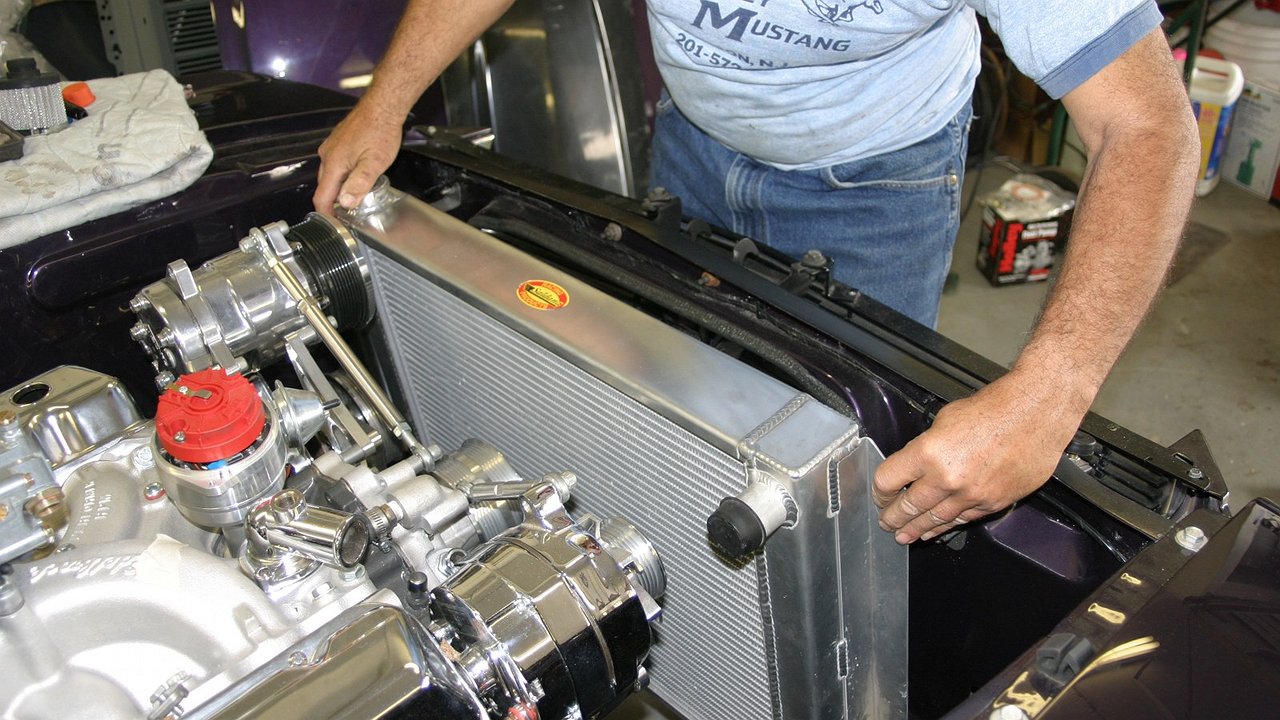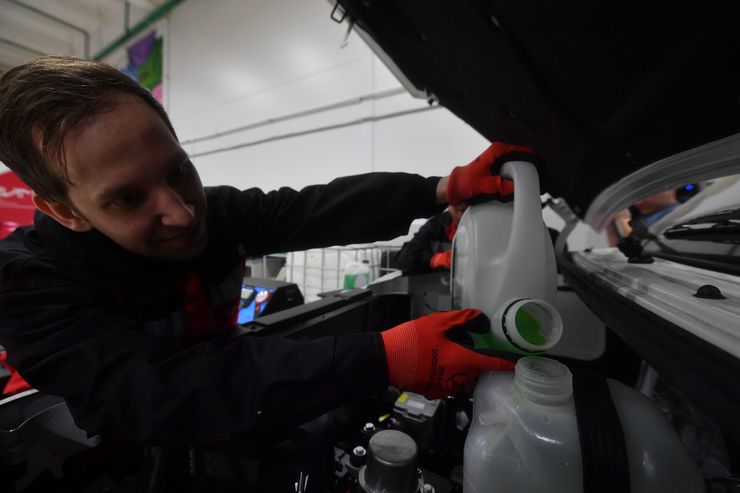Why experienced car owners replace the radiator cap for the summer
- June 30, 2023
- 0
The vast majority of motorists are sure that the radiator cap of the engine cooling (many mistakenly call it a “cork”) is designed solely to prevent antifreeze from
The vast majority of motorists are sure that the radiator cap of the engine cooling (many mistakenly call it a “cork”) is designed solely to prevent antifreeze from

Only fairly experienced and tech-savvy car owners know that a device screwed onto (or “into”) the neck of the engine radiator is not just a piece of threaded iron, but a rather important device. The pressure in the engine cooling system directly depends on it. There are two valves in the radiator cap. One monitors the pressure in the system and, when it exceeds a certain level, it opens and releases the excess into the atmosphere.
The second valve operates as the engine cools down. After the engine stops, with a decrease in the temperature of the antifreeze, the pressure in the cooling system also decreases (remember school physics!) If it drops too much from atmospheric, it can even crush the pipes and break the tightness of break the connections. To avoid this effect, the “atmospheric” valve lets outside air into the cooling system at the right time. Sometimes both valves are combined into one design.
A typical radiator cap vent valve is designed to open when the internal pressure is about double atmospheric pressure. Usually it is equal to 1.1 kgf / cm² – 1 “atmosphere”. And on the radiator caps of various cars you can see the marking corresponding to the level from 0.9 to 1.1 kgf / cm². This is due to the design features of a particular engine and, in particular, the operating temperature.
For some modern engines it may be equal to 90ºС, while for others it may all be 120ºС. But this is a topic for another material. The marking means that the valve in the lid will work and open when the pressure in the cooling system exceeds the specified value. In hot weather, the engine of any vehicle works under difficult conditions: cooling efficiency decreases compared to, for example, winter conditions. This significantly increases the risk of overheating.
Such a phenomenon in itself is not dangerous, but as a result, one of the pipes with antifreeze may not withstand and burst in a weak spot. Or even worse, the cylinder head gasket. In this case, the coolant begins to flow into the combustion chamber of the engine, and the exhaust gases into the cooling system. The result: the need for serious engine repairs.
To avoid such a scenario, experienced motorists replace the radiator cap for the summer. Instead of the ordinary one, for example calculated at 1.1 kgf / cm², they put exactly the same, but labeled 1 kgf / cm² or even 0.9 kgf / cm². Such “tuning” avoids critical pressures in the engine cooling system and thus prevents situations that lead to engine overhaul.

Only fairly experienced and tech-savvy car owners know that a device screwed onto (or “into”) the neck of the engine radiator is not just a piece of threaded iron, but a rather important device. The pressure in the engine cooling system directly depends on it. There are two valves in the radiator cap. One monitors the pressure in the system and, when it exceeds a certain level, it opens and releases the excess into the atmosphere.
The second valve operates as the engine cools down. After the engine stops, with a decrease in the temperature of the antifreeze, the pressure in the cooling system also decreases (remember school physics!) If it drops too much from atmospheric, it can even crush the pipes and break the tightness of break the connections. To avoid this effect, the “atmospheric” valve lets outside air into the cooling system at the right time. Sometimes both valves are combined into one design.
A typical radiator cap vent valve is designed to open when the internal pressure is about double atmospheric pressure. Usually it is equal to 1.1 kgf / cm² – 1 “atmosphere”. And on the radiator caps of various cars you can see the marking corresponding to the level from 0.9 to 1.1 kgf / cm². This is due to the design features of a particular engine and, in particular, the operating temperature.
For some modern engines it may be equal to 90ºС, while for others it may all be 120ºС. But this is a topic for another material. The marking means that the valve in the lid will work and open when the pressure in the cooling system exceeds the specified value. In hot weather, the engine of any vehicle works under difficult conditions: cooling efficiency decreases compared to, for example, winter conditions. This significantly increases the risk of overheating.
Such a phenomenon in itself is not dangerous, but as a result, one of the pipes with antifreeze may not withstand and burst in a weak spot. Or even worse, the cylinder head gasket. In this case, the coolant begins to flow into the combustion chamber of the engine, and the exhaust gases into the cooling system. The result: the need for serious engine repairs.
To avoid such a scenario, experienced motorists replace the radiator cap for the summer. Instead of the ordinary one, for example calculated at 1.1 kgf / cm², they put exactly the same, but labeled 1 kgf / cm² or even 0.9 kgf / cm². Such “tuning” avoids critical pressures in the engine cooling system and thus prevents situations that lead to engine overhaul.
Source: Avto Vzglyad
Donald Salinas is an experienced automobile journalist and writer for Div Bracket. He brings his readers the latest news and developments from the world of automobiles, offering a unique and knowledgeable perspective on the latest trends and innovations in the automotive industry.